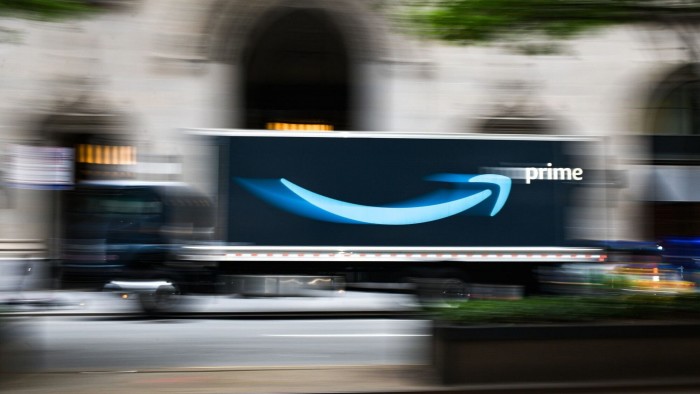Unlock the Editor’s Digest for free
Roula Khalaf, Editor of the FT, selects her favourite stories in this weekly newsletter.
Amazon Prime Day is often referred to as Black Friday in July. For good reasons. What started out as a one-day event back in 2015 for shoppers to snag discounts on big-ticket items has morphed into an annual extravaganza that is widely copied by other retailers.
Last year’s Prime Day generated about $13.4bn in gross merchandise value over a 48-hour period, according to Bank of America. That’s a 10 per cent increase on 2023 and represents about 6 per cent of Amazon’s online store sales in 2024.
This time round, Prime Day arrived amid concerns that sales would not match the spectacular highs of past years. Consumers are decidedly more cautious. Sellers, facing tariffs, have less reason to offer large discounts. And competition from other retailers — namely Walmart — has increased.
Direct comparison is made trickier this year because Prime Day stretches out over four days instead of two. But in any case, zooming in on sales misses the point. Amazon Prime, and the annual deal bonanza that celebrates it, isn’t just a way of shifting goods, so much as a means of feeding the enormous Amazon ecosystem.
First, the sales themselves have a relatively modest impact on the company’s bottom line. Amazon’s ecommerce business may be massive, with revenue accounting for about 39 per cent of the company’s total last year. But operating profit margins — at 5.4 per cent, Bank of America estimates — are slim.
The real money is therefore in driving customers to all its other businesses. These include Prime membership sign-ups, which give more than 300mn subscribers access to deals others don’t get, plus free shipping and other benefits, in return for an annual fee.
More members mean more spending on Amazon’s marketplace and greater consumption of its services and contents such as video streaming, music and AI-powered assistant Alexa.
Advertising — which Bank of America assigns a chunky 55 per cent profit margin — also gets a boost as brands and third party vendors vie for visibility on one of the biggest sales days of the year. It’s a virtuous circle. The more shoppers Amazon can get on its website, the more data it has to take to advertisers to help them create targeted ads.
Prime Day also tends to attract new third-party sellers, a group that already accounts for 60 per cent of Amazon’s retail sales. Fees collected for services like storing inventory and handling logistics for orders have become Amazon’s second biggest business, generating over $156bn in revenue last year.
The real crown jewel now is Amazon Web Services, the company’s cloud business, which makes up nearly 60 per cent of last year’s operating profit. Put its $126bn of estimated revenue this year on the same 11-times multiple as rival Microsoft, and it’s worth $1.4tn, or over 57 per cent of Amazon’s entire enterprise value. Prime Day may be good business, but it’s no longer the main event.
